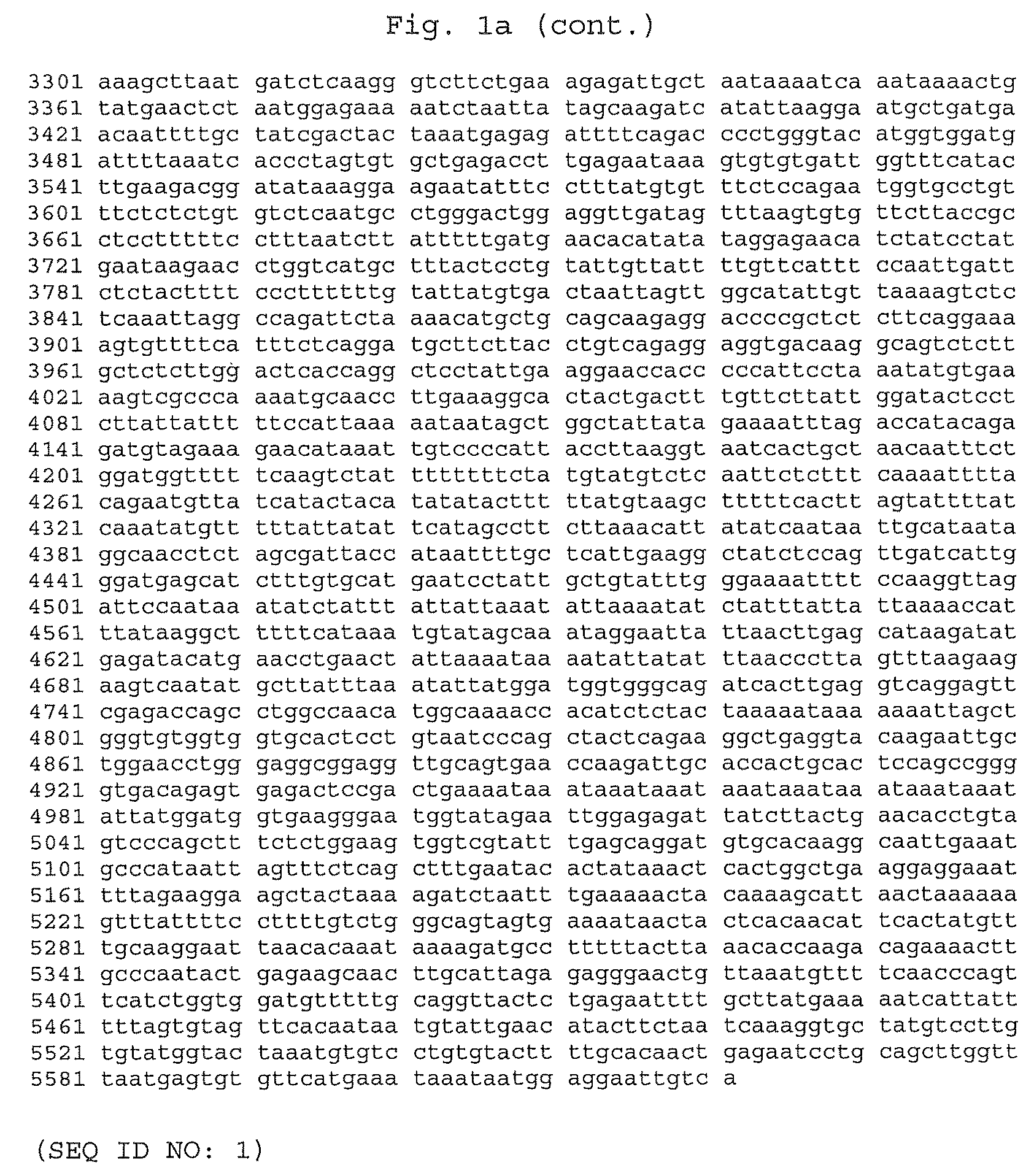Detection and use of low molecular-weight modulators of the cold-menthol receptor TRPM8
a low molecular weight, modulator technology, applied in the preparation of urea derivatives, protective garments, organic active ingredients, etc., can solve the problems of anesthetic effects
- Summary
- Abstract
- Description
- Claims
- Application Information
AI Technical Summary
Benefits of technology
Problems solved by technology
Method used
Image
Examples
example 1
Cloning of Human TRPM8
[0043]The starting point for the cloning of the human TRPM8 receptor is an LnCaP cDNA library. This is, for example, commercially available (e.g. BioChain, Hayward, USA) or can be produced from the androgen-sensitive human prostate adenocarcinoma cell line LnCaP (e.g. ATCC, CRL1740 or ECACC, 89110211) using standard kits.
[0044]The coding TRPM8 sequence (cf. FIG. 1A) can be PCR-amplified and cloned using standard methods. The human TRPM8 gene isolated in this way was used for producing the plasmid plnd_M8, the construction of which is illustrated by the plasmid map according to FIG. 2.
[0045]Alternatively to this, the TRPM8 gene can also be produced synthetically.
example 2
Generation of the HEK293 Test Cells
[0046]As test cell system, HEK293 cell line stably transfected with the human TRPM8 DNA (cf. above plasmid plnd-M8) are produced. Preference here is given to HEK293 which offers the option, via the introduced plasmid, of inducing the TRPM8 expression by means of tetracycline.
[0047]Methods for producing suitable test cell systems are known to the person skilled in the art. For example, the details of the preparation of the cells used according to the invention can be found in Behrendt H. J. et al., Br. J. Pharmacol. 141, 2004, 737-745 or the dissertation by Behrendt “Vergleichende funktionale Untersuchungen des Hitze-Capsaicin-Rezeptors (TRPV1) und des Kälte-Menthol-Rezeptors (TRPM8) in rekombinanten und nativen Zellsystemen”. [Comparative functional investigations of the heat capsaicin receptor (TRPV1) and of the cold menthol receptor (TRPM8) in recombinant and native cell systems].
[0048]Reference is expressly made to the disclosure of these docume...
example 3
Assay on TRPM8 Modulators
[0049]A test comparable with the test already described in the literature by Behrendt H. J. et al., Br. J. Pharmacol. 141, 2004, 737-745 is carried out. The agonization or antagonization of the receptor can be quantified by means of a Ca2+-sensitive dye (e.g. FURA, Fluo-4 etc.). On their own, agonists bring about an increase in the Ca2+ signal; antagonists bring about, in the presence of e.g. menthol, a reduction in the Ca2+ signal (in each case detected via the dye Fluo-4, which has different fluorescent properties as the result of Ca2+).
a) Test Procedure:
[0050]Firstly, a fresh culture of transformed HEK cells is prepared in a manner known per se in cell culture flasks. The test cells HEK293-TRPM8 are detached from the cell culture flasks by means of trypsin and 40 000 cells / well are sown out with 100 μl of medium in 96-well plates (Greiner #655948 poly-D-lysine-coated). To induce the receptor TRPM8, tetracycline is added to the growth medium (DMEM / HG, 10% ...
PUM
| Property | Measurement | Unit |
|---|---|---|
| ion permeability | aaaaa | aaaaa |
| composition | aaaaa | aaaaa |
| size | aaaaa | aaaaa |
Abstract
Description
Claims
Application Information
 Login to View More
Login to View More - R&D
- Intellectual Property
- Life Sciences
- Materials
- Tech Scout
- Unparalleled Data Quality
- Higher Quality Content
- 60% Fewer Hallucinations
Browse by: Latest US Patents, China's latest patents, Technical Efficacy Thesaurus, Application Domain, Technology Topic, Popular Technical Reports.
© 2025 PatSnap. All rights reserved.Legal|Privacy policy|Modern Slavery Act Transparency Statement|Sitemap|About US| Contact US: help@patsnap.com



